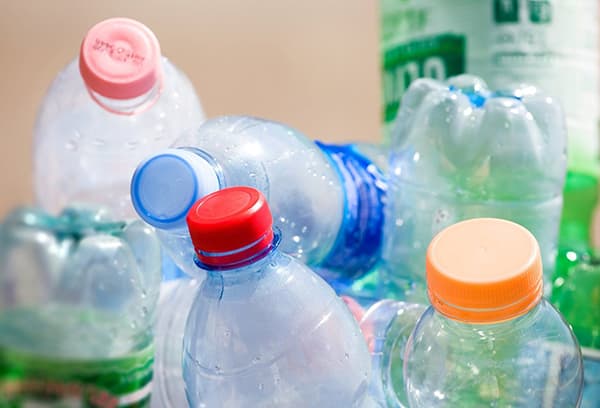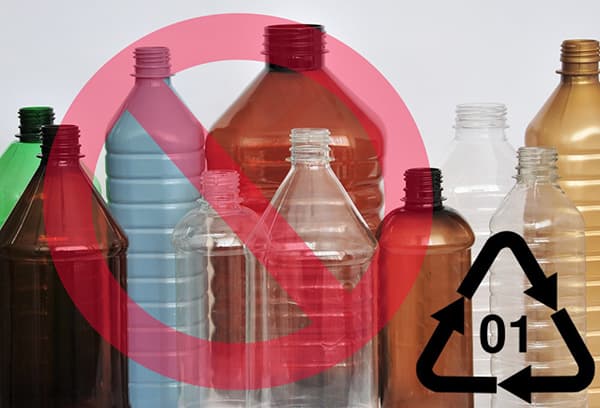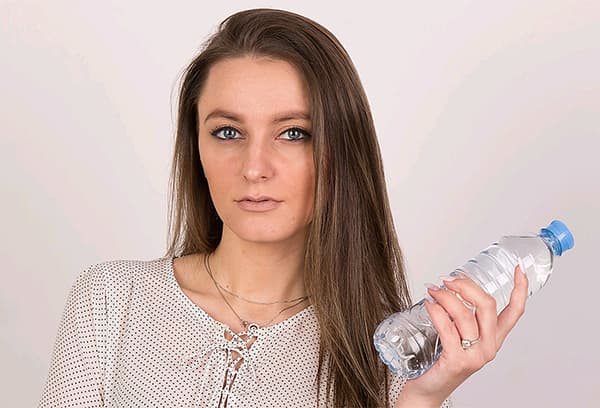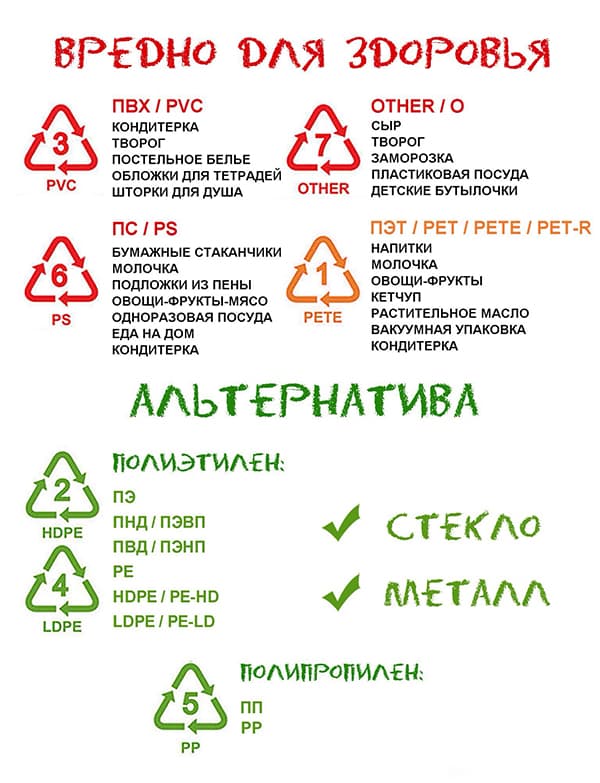Which plastic bottles can be reused?
Since the Americans released the first plastic bottle in 1970, this cheap and practical thing has been used everywhere as a container for water, butter, milk, juice, and carbonated drinks. Many people keep water bottles for a long time, because they are so convenient to take on the road or to a workout. However, not all bottles can be reused. The possibility of reusable use depends on the quality of manufacture and consumer characteristics of the material.
A win-win option for reusable use is glass, but some types of plastic are also guaranteed not to harm your health.

Why are plastic bottles harmful?
Frequent use of plastic bottles and other items made from this material is fraught with undesirable health consequences. The fact is that in the manufacture of plastic they use the inexpensive hardener bisphenol-A. A tiny amount of the chemical dissolves in the food or water contained in such containers. However, this is quite enough to cause significant harm to the human body.
Scientists have identified the structural similarity of bisphenol-A to estrogen and the ability of the chemical to imitate the effect of the hormone. Doctors believe that this can negatively affect brain activity and also affect the reproductive and endocrine systems.
The next disadvantage of plastic, which excludes the possibility of reuse, is due to the structure of the material: it has a rather soft surface compared to glass. Cracks and scratches quickly appear on a plastic bottle - breeding grounds for bacteria.
A particularly large number of harmful microorganisms settle on the neck and inside of the lid. The threads do not allow for proper cleaning, and moisture creates a favorable environment for the growth of microbes.
Which container is safer?
There are several types of plastic used to make food containers and utensils. All of them are considered safe, their production is permitted by the relevant authorities.
The composition of the package is indicated by a triangular icon with numbers and letters located inside it:
- PET (PET, PETE) - material with low barrier properties. Ultraviolet light and oxygen easily penetrate into bottles, which negatively affects the quality of water. PET bottles cannot be used a second time.
- HDPE - high-density polyethylene. A safe material that, according to experts, does not emit harmful chemicals. It is used for storing milk, water, and is used in the manufacture of sports flasks.
- PVC - polyvinyl chloride. Very soft and flexible material, resistant to ultraviolet radiation. Often used as a container for vegetable oil.
- LDPE - low density polyethylene. It does not pollute water with chemical elements, but is not suitable for storing other products (butter, milk, alcohol).
- PP – polypropylene. A hard, heat-resistant plastic that will not melt when heated in the microwave.
- PS – polystyrene.An affordable, lightweight, durable material, but when heated it can release harmful compounds. It is better not to use it for water and food.
- PC - polycarbonate. It is considered the safest type of plastic, which is characterized by strength and resistance to high temperatures. It does not interact with water, so repeated use of such containers is permissible. However, if other liquid substances, especially hot ones, are poured into polycarbonate bottles, they can become hazardous to health.
OTHER - all other plastics.
Undoubtedly, the safest container for drinks and food products is glass. It is chemically inert, does not interact with molecules of water or any other liquid and does not distribute substances hazardous to health. Of course, even in such a reliable container, water exposed to the sun will turn rotten and “bloom” after a while. A glass bottle can be used as many times as you like. The main thing is to wash or sterilize well before use.
Silver medalist for safety - polycarbonate. This container is 20 times lighter than glass and much stronger. However, there is a danger of harmful chemical compounds from the material.
Bottles made of polyethylene and PVC allow ultraviolet light and oxygen to pass through, and in addition, when the ambient temperature rises, they can release toxic substances into the water, so it is not recommended to use them several times.


